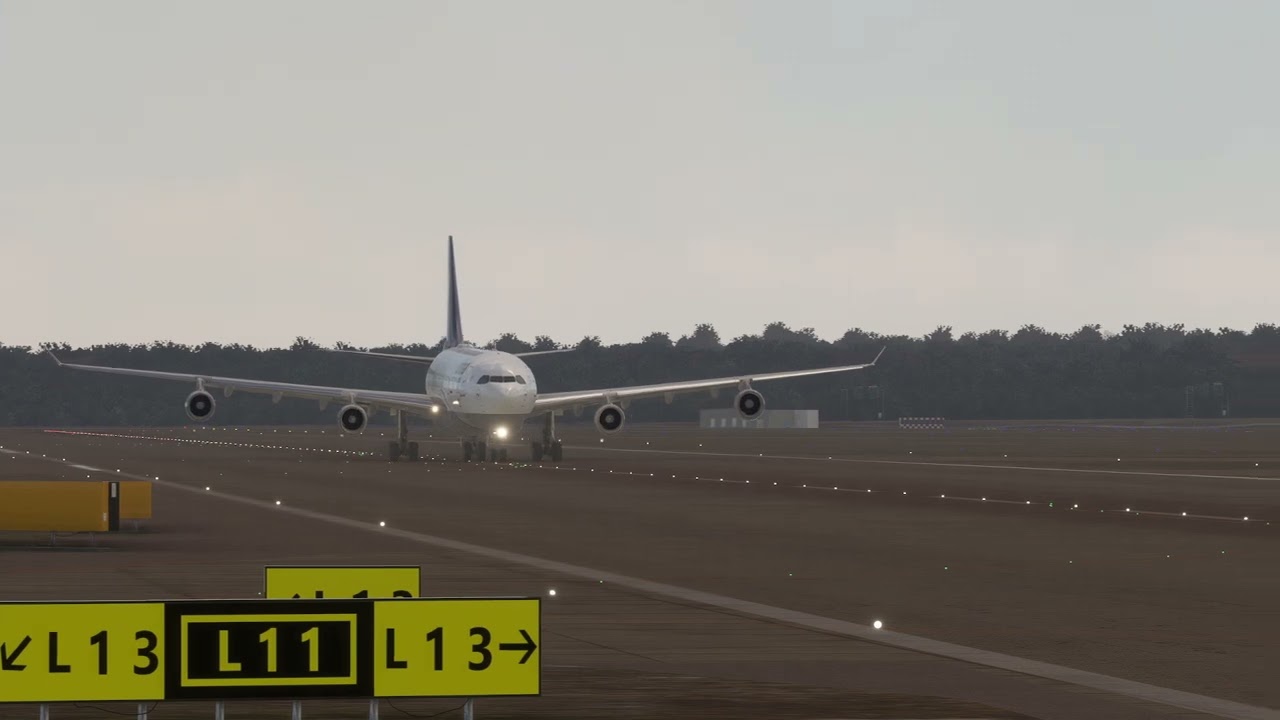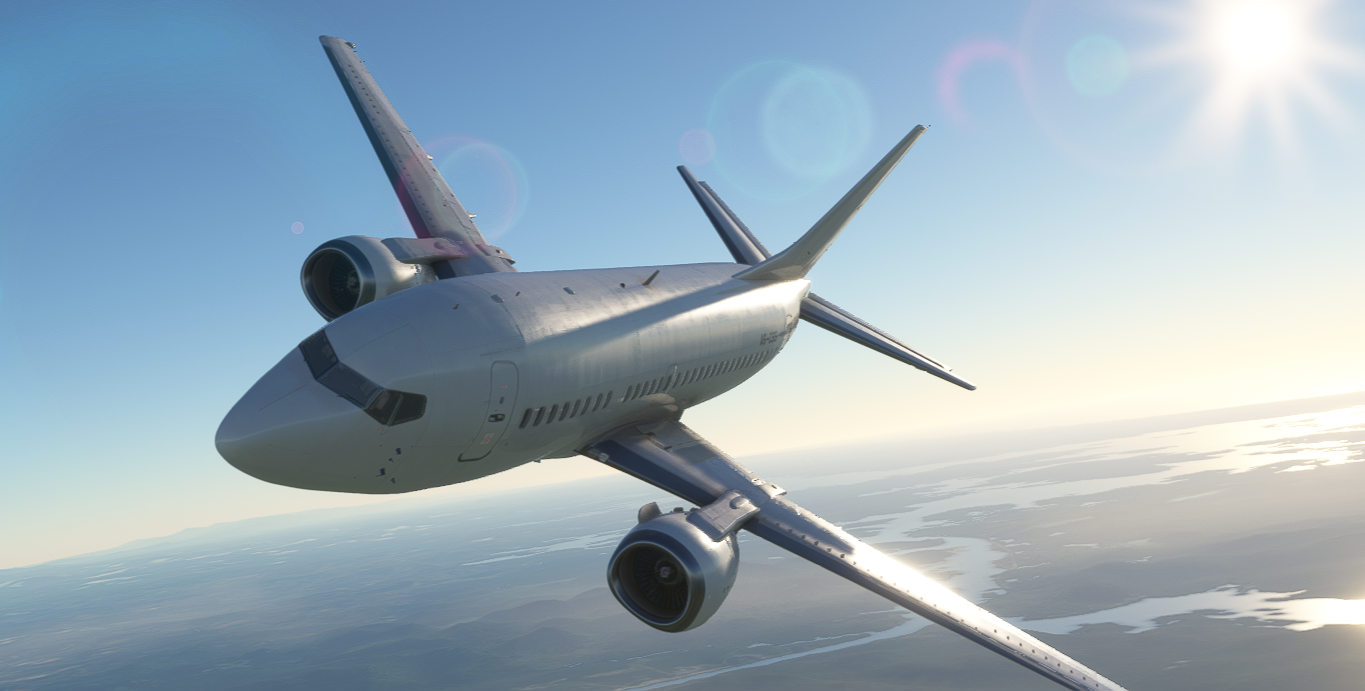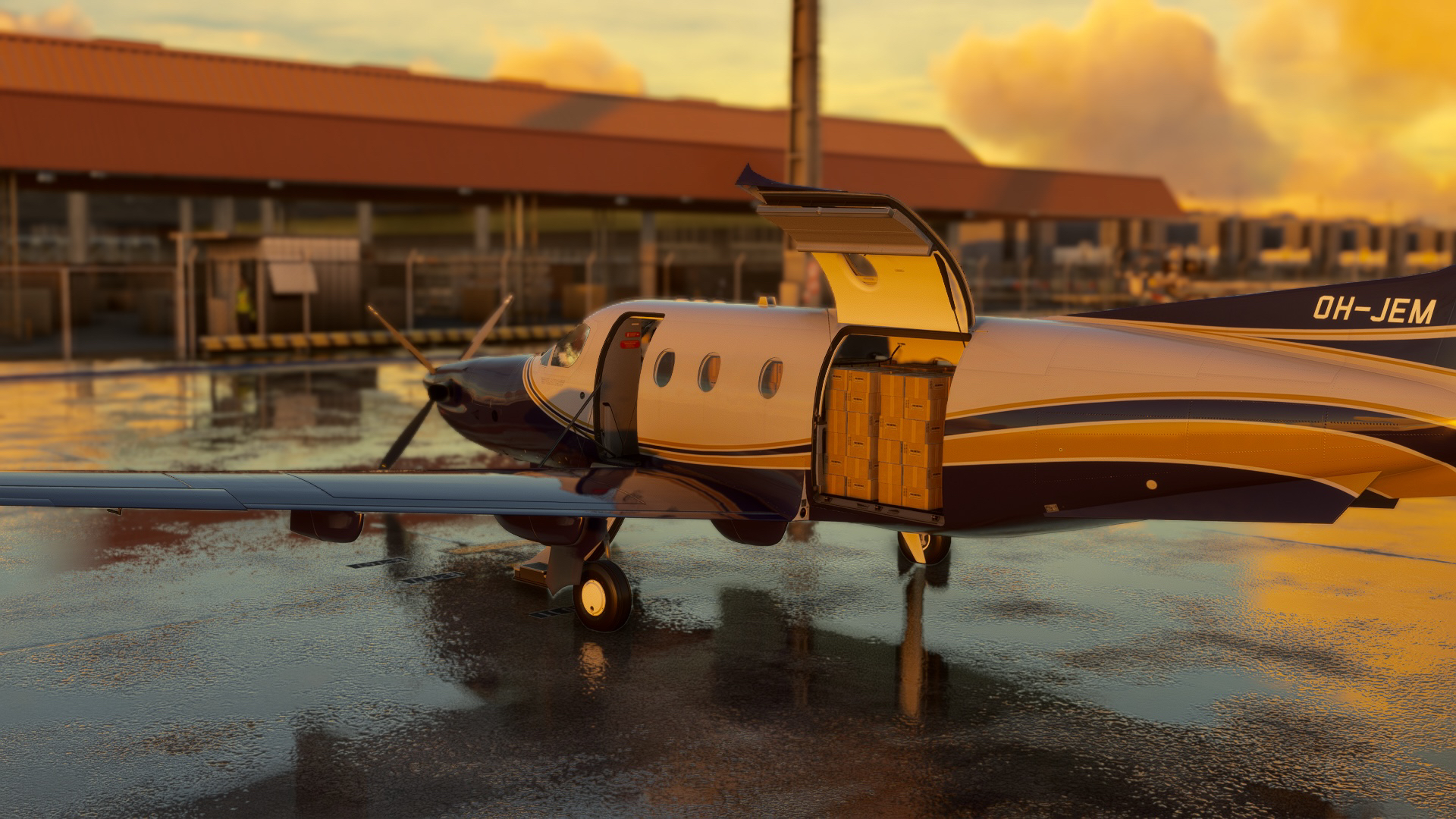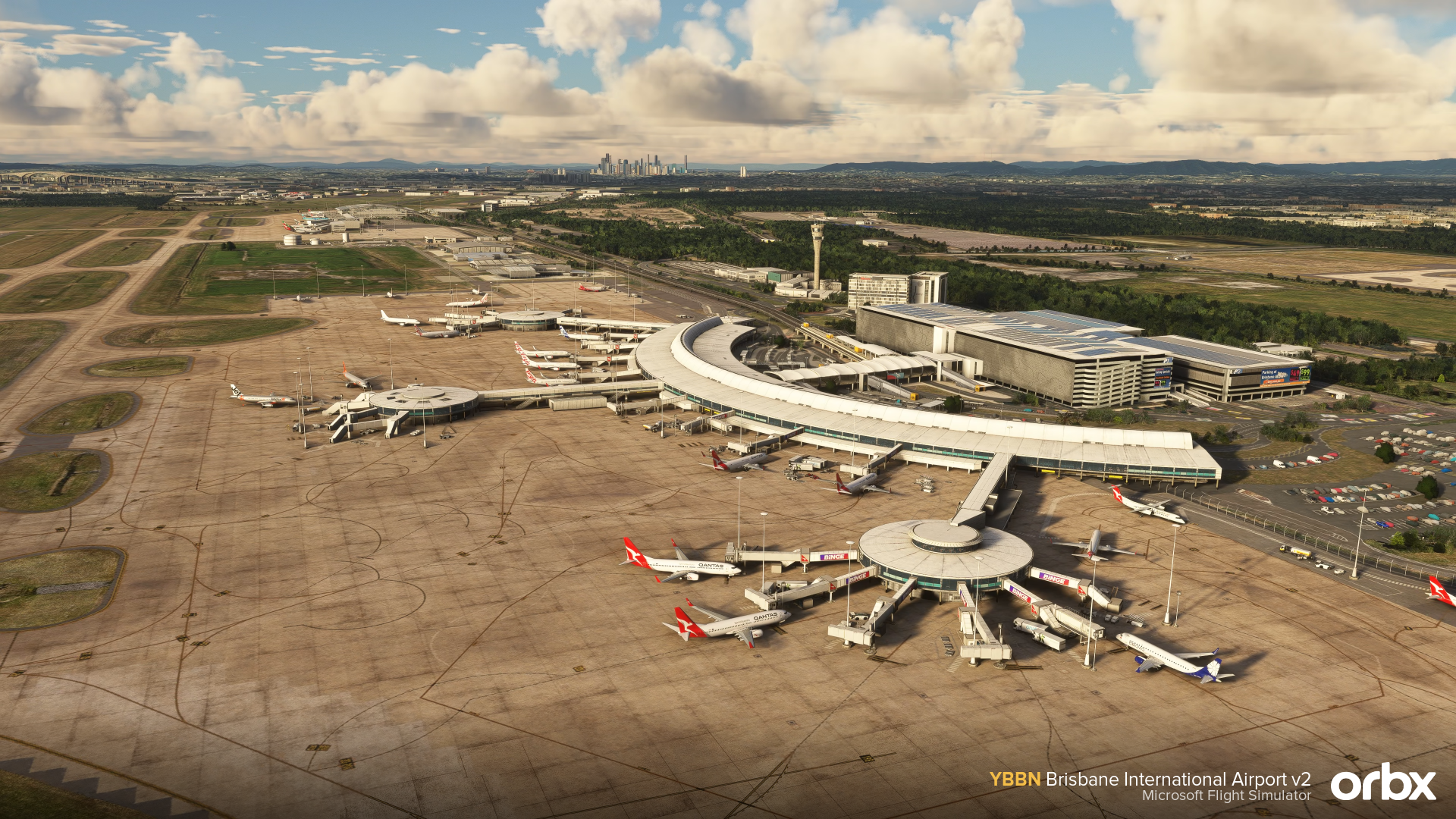
LatinVFR A340 Review Setup
The LatinVFR Airbus A340-300 review was conducted on a PC copy of Microsoft Flight Simulator, both before and after Sim Update 15. For performance comparison, my PC is equipped with an NVIDIA RTX 3080, AMD Ryzen 5800X3D, and 64GB of RAM on an ultrawide 5120×1440 monitor. All settings are on Ultra/High with Render Scale set to 95, Terrain LOD set to 220 and Object LOD set to 140.
I am an instrument-rated private pilot and have been simming seriously since MSFS released in 2020. My peripherals include a Thrustmaster TCA Captain’s joystick, TFRP rudder pedals, and the Honeycomb Bravo throttle quadrant. I also use a MiniFCU and a Tobii Eye Tracker 5. I purchased the copy of the LVFR A330-400 reviewed today, and as always, all opinions and conclusions contained herein are my own.
APU-Powered Long-Haul Giant
When the first A330-300s entered service with Lufthansa and Air France in 1993, it was designed to compete against the Boeing 747 and McDonnell-Douglas Trijets for long-range operations. Equipped with four CFM-56-5C4 engines (yes, a derivative of the same CFM56 that powers the 737 and Airbus A320) it initially saw success as Air France immediately replaced its 747s with A340s. Although commonly referred to as “underpowered” due to its almost comically small engines (although it is not – the long time-to-climb is actually due to a focus on comfort and efficiency), the A340 family was nonetheless an attractive option to airlines, especially those with Airbuses already in their fleet – since the commonality between cockpits and systems of the A320, A330, and A340 offered easy and inexpensive transition training to the new type for their existing pilots.
However, the A340 was designed at a time when fuel was cheap, and ETOPS (Extended Twin Operations – the regulations governing twin-engine air carrier operations over water) was strict, favoring tri- and quad jets in the long-haul role. By the early 2000s, though, ETOPS restrictions had loosened with new, more efficient twins such as the GE90-powered Boeing 777 becoming more attractive to air carriers. Jet fuel prices soared in 2008, and it became uneconomical for many carriers to operate the A340 on its currently scheduled routes, with some routes needing an aircraft filled to 120% passenger capacity just to break even.
Despite its popularity as VIP transport and boasting a stellar zero-fatal-accident safety record as of 2024, economic pressures caused the end of production for all A340 variants in 2011. The A340-300 remains in operation today where it still finds a niche in “long, thin” routes that may not be as popular for its operators. It has also spawned a legendary aircraft: “Deli Mike,” the A330-300 with a personality.
LatinVFR A340 for MSFS Availability and Features
The LatinVFR Airbus A340-300 for Microsoft Flight Simulator is available from the MSFS Marketplace for $29.49. This price makes it cheaper than the A330-900NEO, priced the same as their A320 series. It includes 32 liveries from worldwide operators. I love that LatinVFR includes so many liveries of airlines and countries that I am not familiar with. Sometimes I need motivation to get out of the comfort zone of the regions that I fly in, and including diverse liveries gives me the push I need. A plethora of ground equipment has been included, and it is all controllable through the EFB.

The LVFR A340 has an EFB with most of the features that you would expect at this stage. You can import your flight plan and pull weather data, connect your Navigraph subscription to integrate charts, and manage ground equipment and panel states. There is a rudimentary takeoff performance calculator as well as checklists to keep track of your flight. LVFR’s EFBs have continuously improved and this one is the best yet, but there still are some features missing. In particular, there is no calibration for the throttles. I view this as mission-critical in an Airbus (or any other aircraft with throttle detents) and its omission in the launch mars the entire experience. LatinVFR will add this feature after the avionics update, but in my opinion, it needed to be included from the start.
LVFR A340 Visuals
LatinVFR has done an acceptable job on the model and textures for their A340-300 for a product at this price point. The visual experience is largely positive overall and there are some standout features. For example, wing flex animation is actually some of the most natural and fluid that I have yet to see in Microsoft Flight Simulator. As always, the cabin model is excellent. The cockpit appears accurate to reference photos I could find. When flying the LVFR A340 for this review I was typically not distracted by any issues at “normal” viewing distances and camera positions. I was certainly able to fill up my screenshots folder with glorious A340 imagery and, after all, isn’t that really what Flight Simulator is all about?
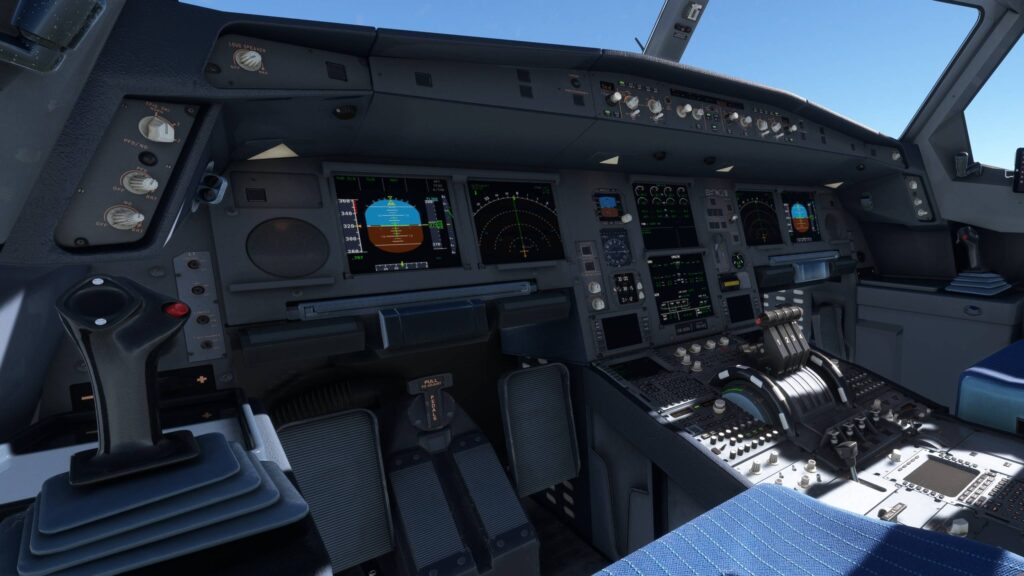
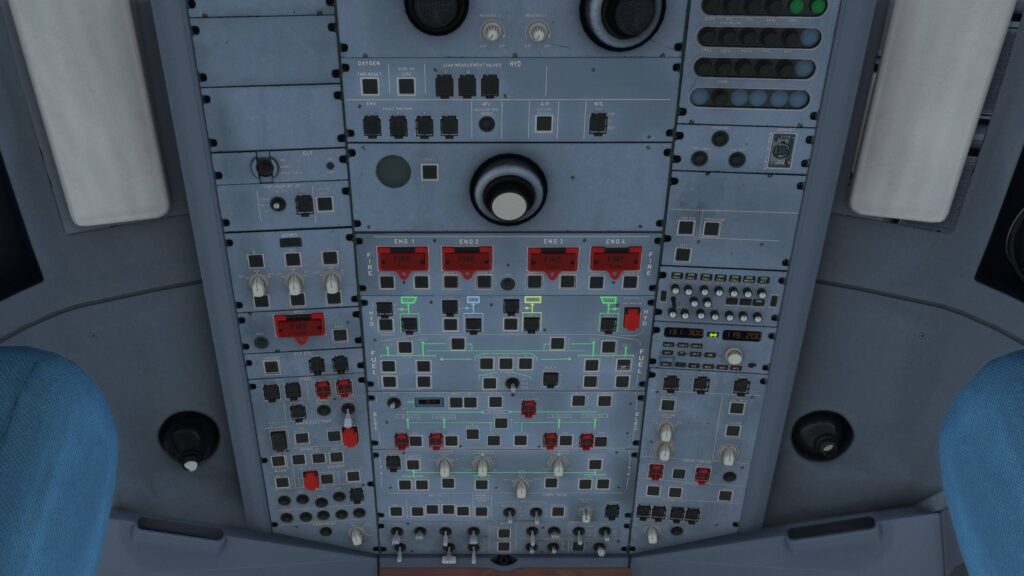
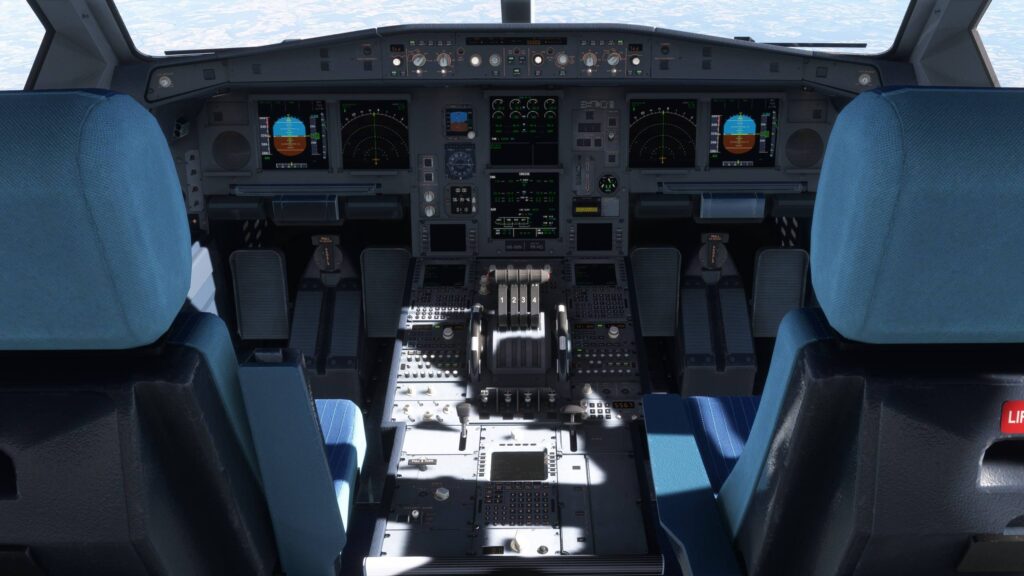
Lack of attention to detail
However, visual shortcomings still detract from the experience and, in my opinion, are beginning to hold LatinVFR back from the trajectory of improvement they’ve been on for a while. Model issues are the most apparent, with things like the flap track fairings inaccurate to the real aircraft on initial launch, misaligned underneath the wings, and flaps that do not retract smoothly into their full-up position. The inaccurate fairings were fixed in a post-launch update after LVFR was presented with reference photos on their forum. While I am happy that they fixed it, to me it indicates a lack of attention to detail during development.
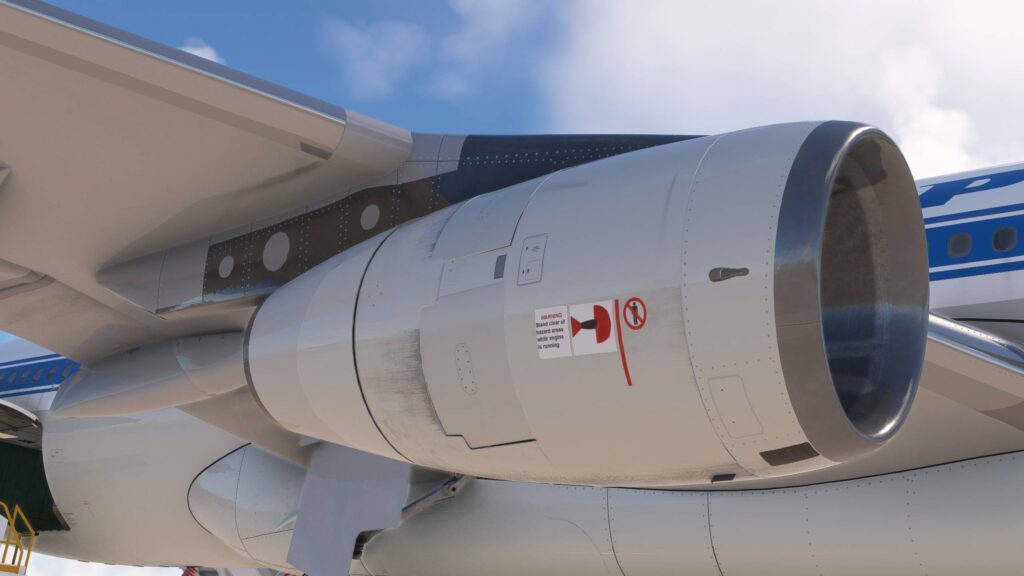

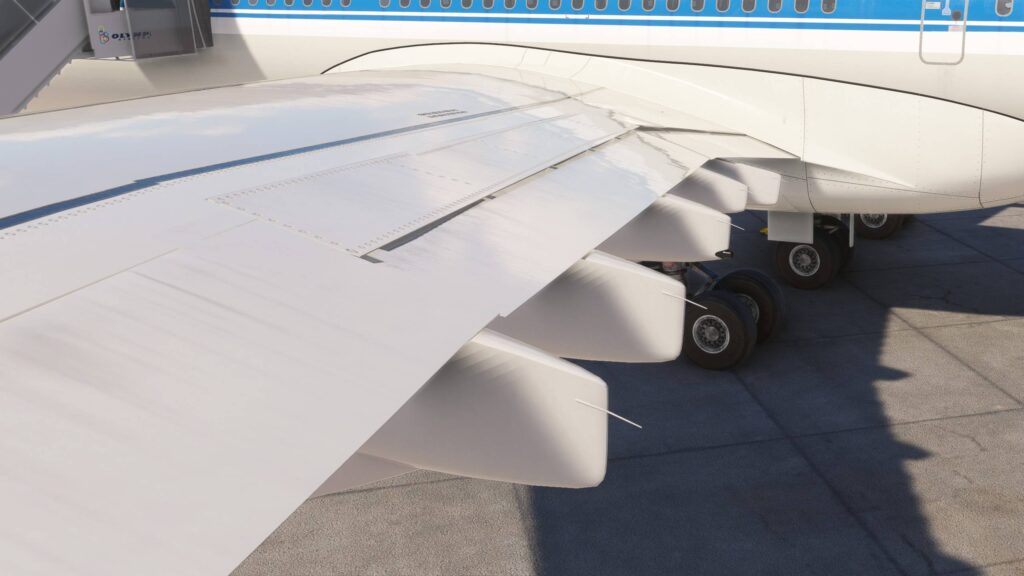


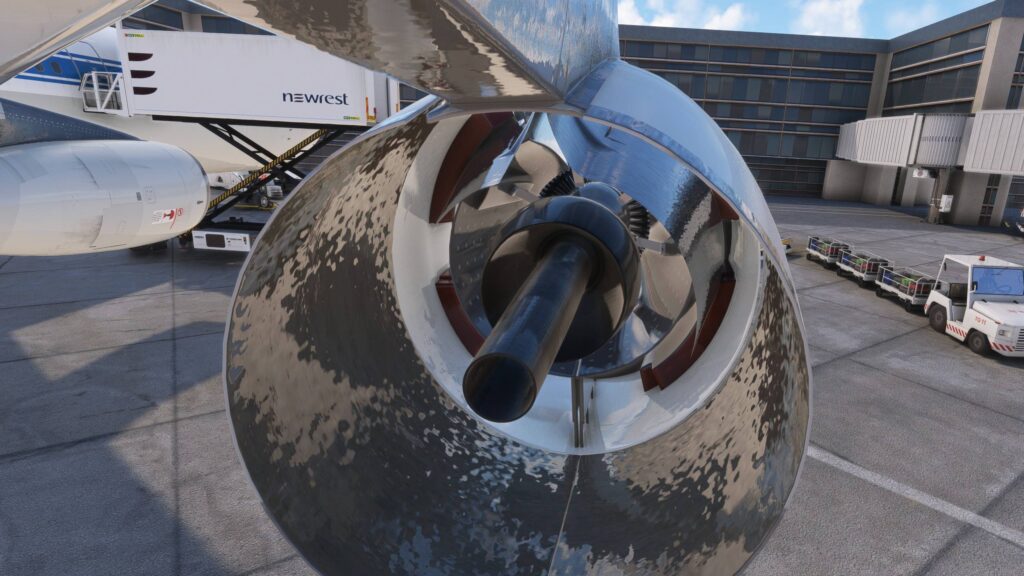


This lack of attention to detail crops up in other areas as well. Reading lamps in the cockpit have their “bulbs” completely misaligned with, and clipping through, their housing. Landing lights in the wing root aren’t even modeled or textured. The beacon light is a flat red dome – not even textured or transparent. There’s a panel in the back of the cockpit that just appears to open to the sky. Engine innards float and don’t connect to anything, with metallic textures straight out of PS2-era games. Textures are generally okay and decals are high-resolution, but portions of the aircraft are textured with so few pixels that I can count them by hand. But hey – they modeled the lavatories!
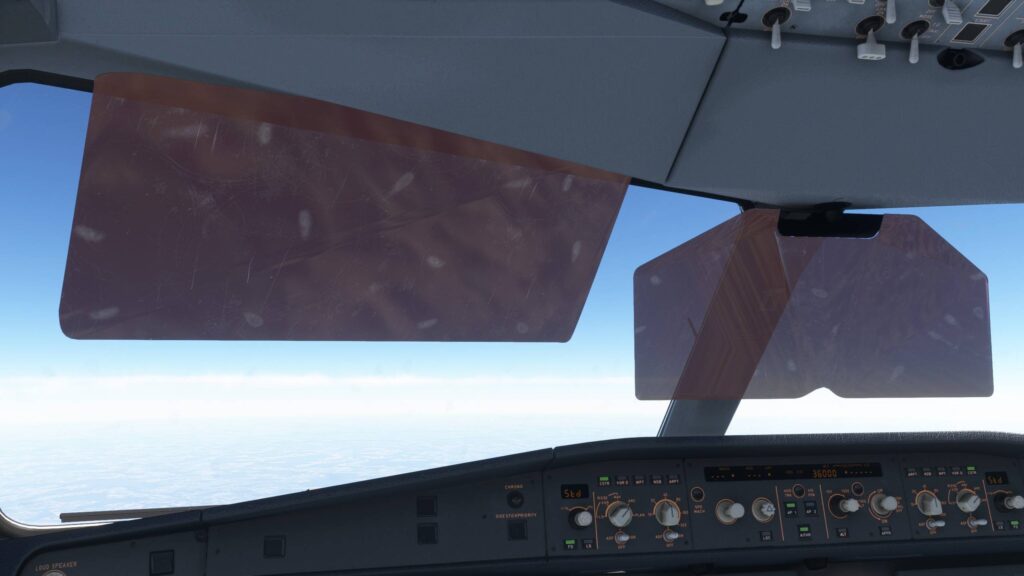
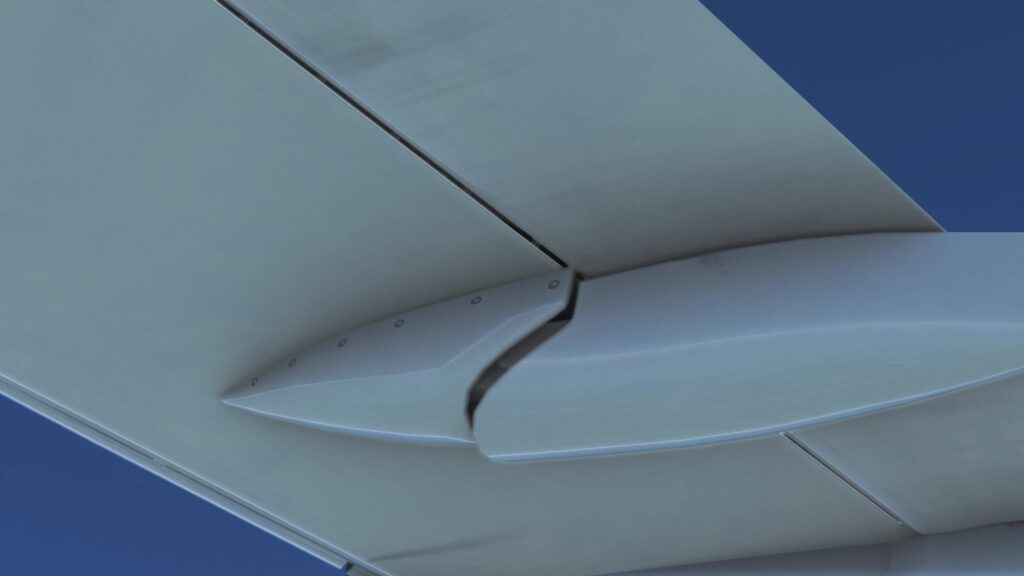
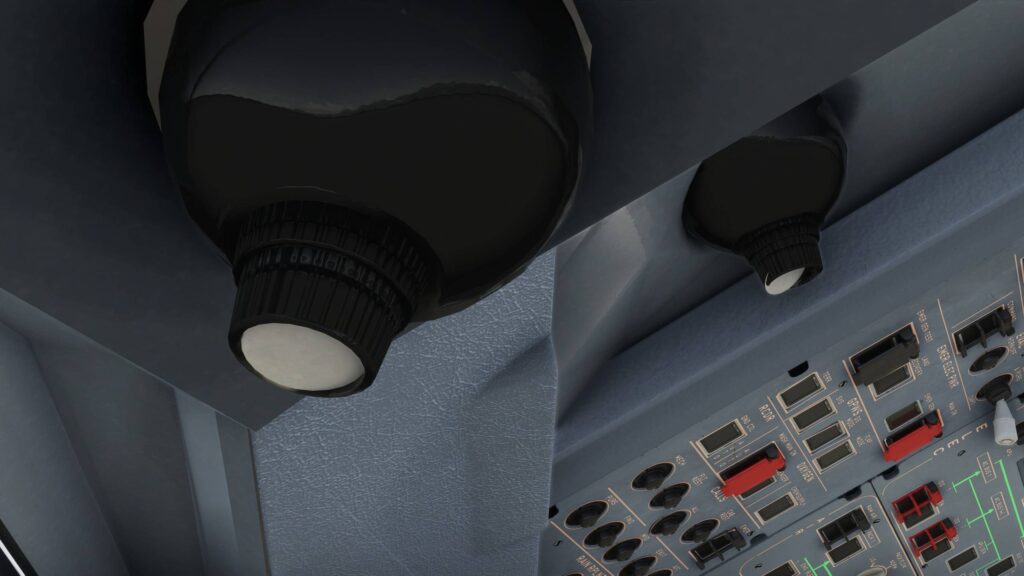
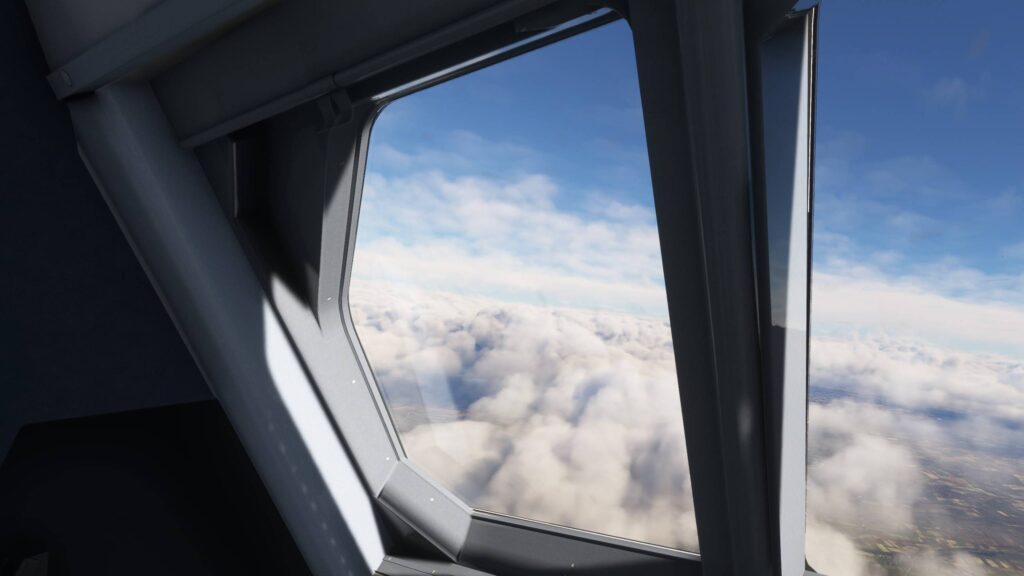


That all sounded harsh, and it may be – but I want to reiterate that, on the whole, I think the visuals are acceptable for a $30 airliner. What disappoints me is LatinVFR’s seeming stagnation – many of these issues are similar to (or, in the case of misaligned flaps, identical) to the ones I highlighted in my A330-900NEO review. Yet, there seems to have been no effort to raise the bar for the development of their next product. It is also interesting to me the areas that receive special attention – the landing gear looks quite good – seemingly at the expense of other details.
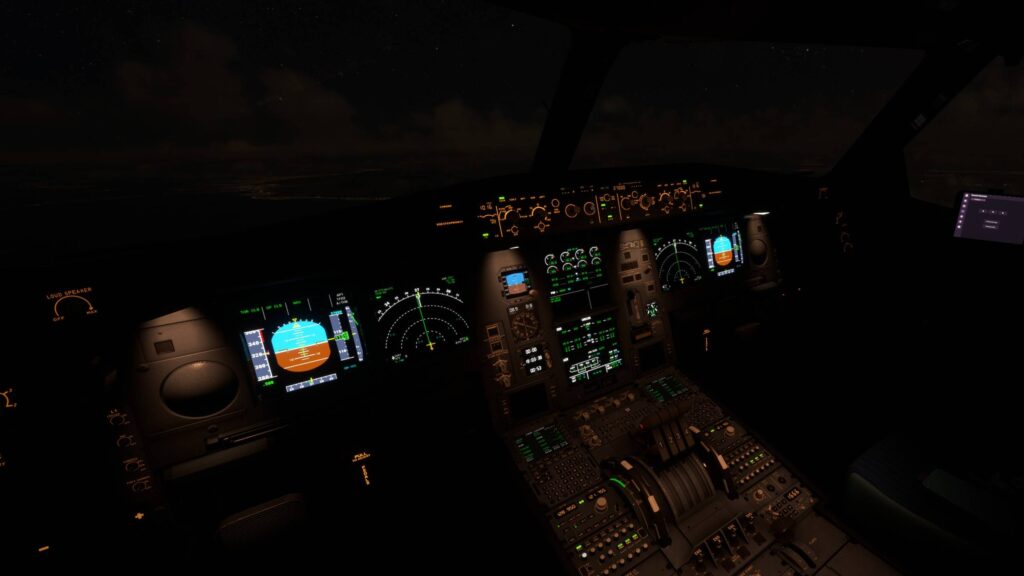
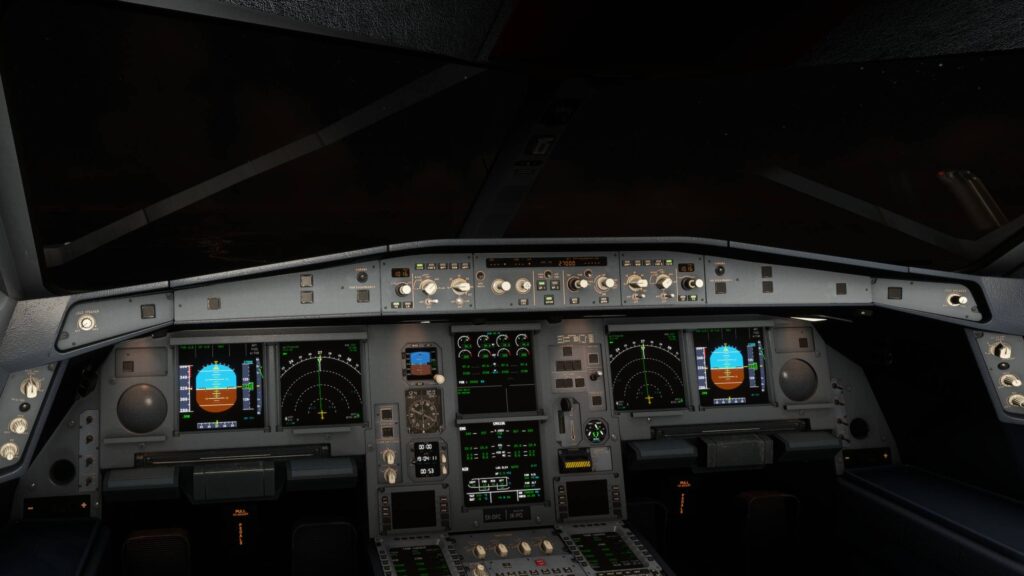
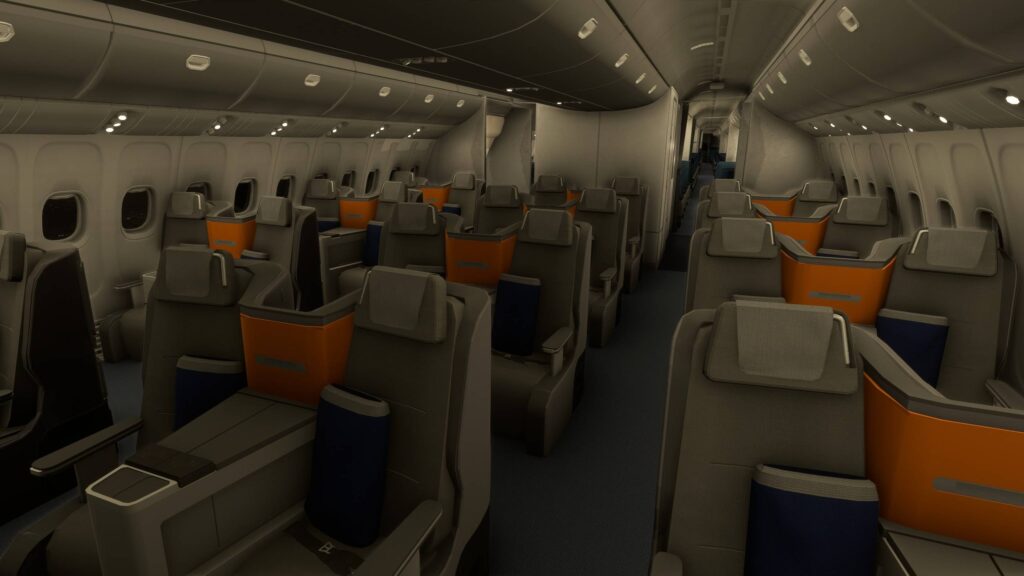
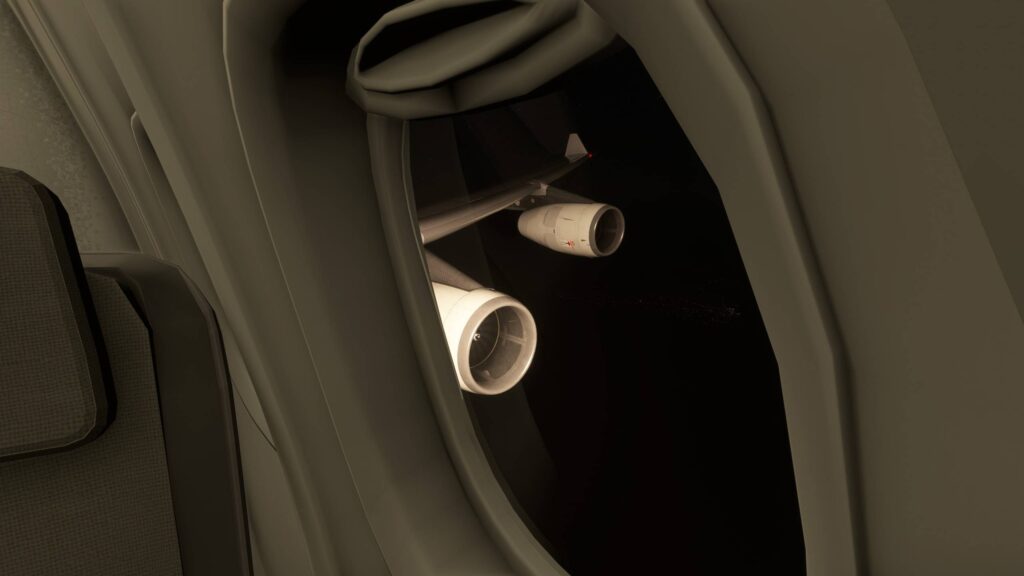
LVFR A340-300 Sounds
LatinVFR’s Airbus products have never had an issue with sounds, and the A340-300 continues this trend. The only item I found lacking was some extension sounds for flaps in the cabin – I never heard any motors when sitting abeam the wing. Otherwise, the sounds are excellent.
Sounds Examples
Flight Model
Once again, my overall impression of the LVFR A340-300 is that LatinVFR has done enough to make the distinct characteristics of the Airbus A340 apparent to the vast majority of flight simmers. It is almost certainly adequate for a $30 add-on – bugs notwithstanding (which we will get to in a moment). The A340’s long time-to-climb is modeled here, and it feels appropriately heavy to fly by hand, at least in the roll axis.
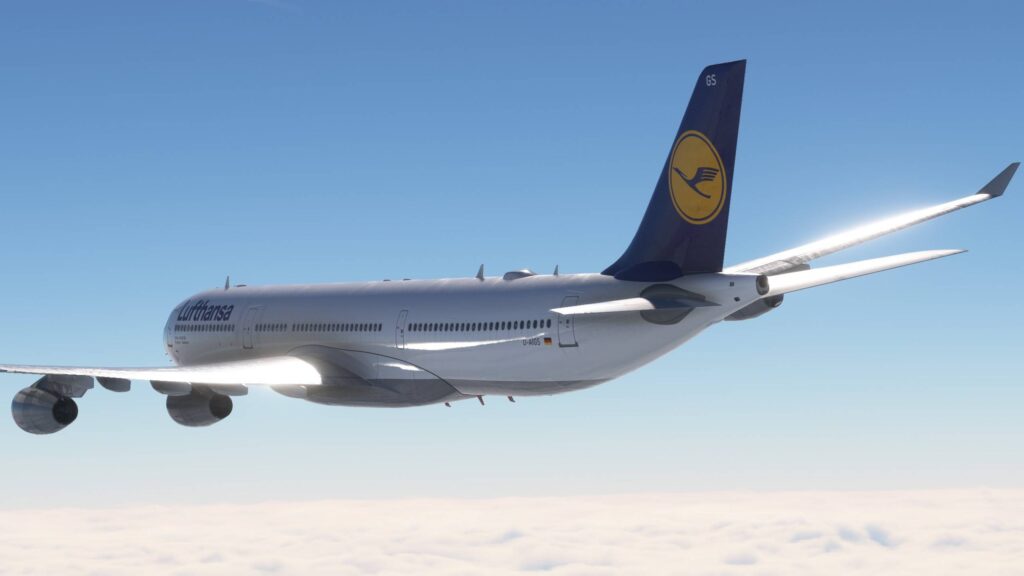

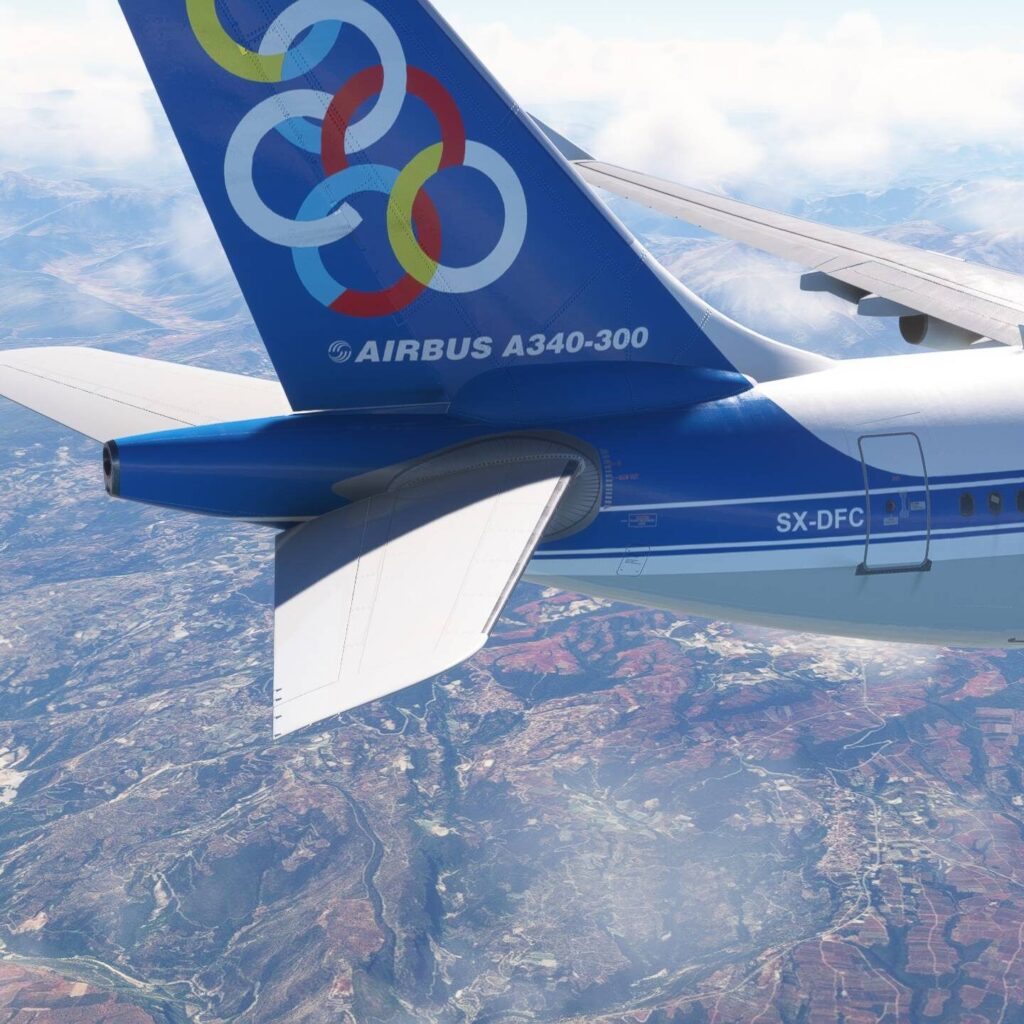
I don’t expect it to be perfectly accurate at this point, and it can get from A to B mostly fine – more on that when we talk about systems. There are a few oddities that I want to highlight, though. First, the aircraft flies with extreme nose-down trim much of the time. Even though I would load the aircraft within its limits and use a SimBrief profile created especially for the LVFR A340-300, the stabilizer trim would often move to the full nose-down stop during both climb and cruise. This did not result in any adverse handling characteristics, but I suspect that there is something amiss with the fuel tank trim system or something of the sort.
I always had challenges landing the A340. MSFS’ ground effect is always a challenge, but the LVFR A340 was abnormally floaty, even so. It is sometimes difficult to understand whether the performance speed calculations are off and causing me to approach with too much energy, or if the aircraft simply develops too much lift. Pitch during flare is extremely sensitive, and after inspecting the aircraft’s behavior, it appears to be automatically adding up trim (about one unit) in a sort of “auto-flare” prior to touchdown with the autopilot disconnected (e.g. – no autoland). I couldn’t find any confirmation as to whether or not this was expected behavior for an Airbus A340.
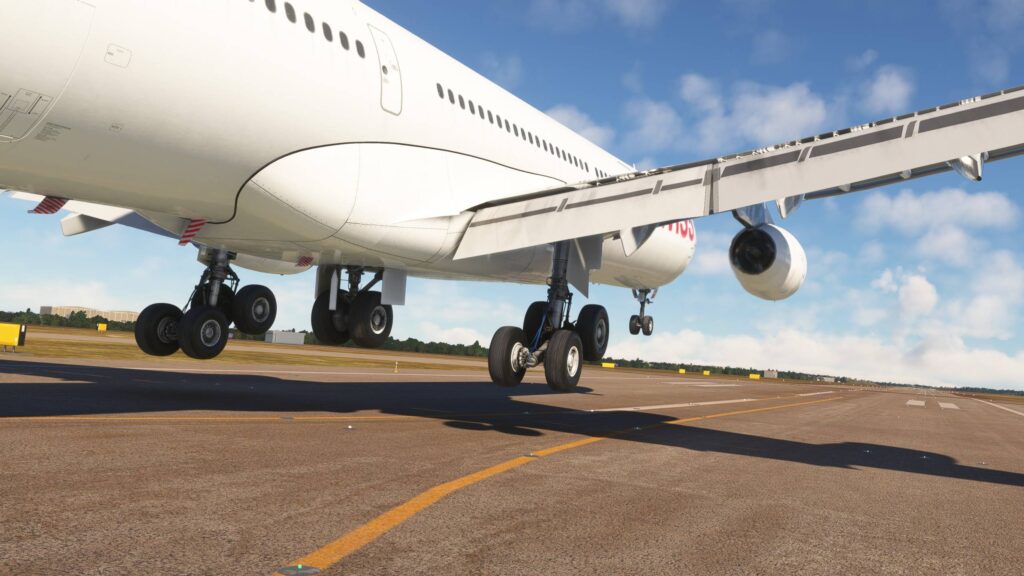
Avionics: Misplaced Priorities
The A340-400 is the first release from LatinVFR to feature their new, customized VNAV that finally throws out the Asobo code to control the vertical navigation (VNAV) of the aircraft with a more competent algorithm. It’s inarguable that the Asobo code needs improving – but I think that LatinVFR has miscalculated by prioritizing a VNAV replacement over an LNAV replacement. In my history reviewing LVFR aircraft, I have been able to manage the vertical profile of the aircraft by using “dumb” modes (Open Climb/Descent, Vertical Speed, etc.). I have always experienced far more issues with Asobo’s LNAV implementations, resulting in far more frustrating issues to recover from.
The A340 is no different here, and it is intricately tied to the shortcomings of the FMS. What use is a custom VNAV system, for example, when I cannot add proper speed or altitude constraints to the FMS? What about when the STARs I am flying are missing half of their transitions (and yes – I am a Navigraph subscriber and keep my AIRAC up-to-date)? There’s still no useful information on the Cruise performance pages, and the aircraft refuses to respect changes to managed speed or properly follow its own deceleration schedule on approach. I had to manage speed manually on every single approach.
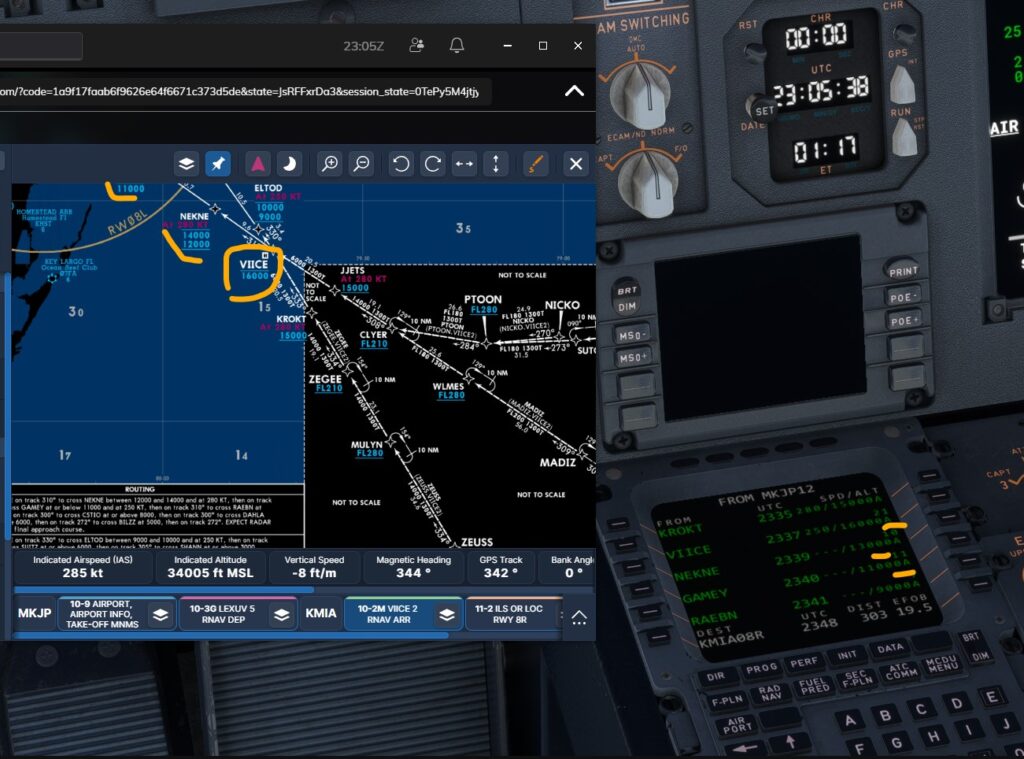
The most frustrating example of the LNAV failings was on approach to TNCM, attempting to fly the RNAV approach to Runway 10. I attempted to vector myself into a downwind from the northeast side of the airport since the transition in the STAR I filed was not recognized by the MCDU. However, the aircraft would not properly accept a Direct-To and would re-sequence the entire STAR and approach when turning inbound to the airport. The only way to get the aircraft on the ground ended up being to fly it completely manually and visually.

For all its shortcomings, the VNAV certainly works competently enough within its limitations. When a SID or STAR is properly sequenced and has correct restrictions from the start, it respects those in managed climb and descent mode. TOC and TOD are calculated correctly, and things like fuel burn appear correct—or at least, the Simbrief profile is tuned to any inaccuracies in the model.
Other systems, such as PACKS simulation, are also missing from the LVFR A340. There are no emergency or failure functions, and there are a couple of annoying issues as well, such as the autobrake MAX disengaging on taxi-out whenever any toe brakes are applied. Turnarounds are not properly supported yet, and sometimes the T.O. INHIBIT warning continues to display while the aircraft is well into cruise. The left fuel tank tended to drain quickly, resulting in a fuel imbalance with everything on AUTO, which was only resolved by turning on both crossfeed pumps – a non-standard procedure.
According to LatinVFR personnel on their forum, a major avionics update is nearing completion to address most of the issues discussed in this review. However, the most glaring issues are with Asobo’s systems, which LatinVFR continues to rely on. Until these are purged from their products, these issues will remain.
Conclusion: It’s fine, I guess
It has been almost two years since LatinVFR released their first aircraft for Microsoft Flight Simulator, and I had a great time flying some of their previous releases. The team at LatinVFR has always been responsive and receptive to feedback on their forum, and I am convinced that they will keep supporting their products to the best of their ability going forward. I want to be very clear: there is a lot that I like about this aircraft, and for an airliner costing $29.49 I think it is largely acceptable. It was stable in both short and long-haul flights, and I am at least confident enough in my own piloting abilities to take over when the automation failed.

But if, dear reader, you have detected an air of resigned disappointment in this review, it is because I am indeed disappointed nonetheless. My sim friends often mock the regard I hold for LatinVFR’s aircraft and the fact that I choose to purchase and fly them of my own volition, but I do so in part because I am excited to follow this developer on their “journey” from developing sceneries to aircraft. I did not see the kind of improvement that I expected when LatinVFR announced this venerable widebody airliner.
It was especially disappointing to see very little raising of the bar between the release of the A330-900NEO and the A340-300. All the old problems are still there, and the improvements are minor at best and worst, only to highlight the remaining shortcomings. I fully acknowledge that developing an aircraft of any level of detail for MSFS is hard work and I commend LatinVFR for the progress they continue to make. It’s great to have an A340 in the simulator – but I hope that LVFR takes some time before their next big project to well and truly wow us.

I am pleased this aircraft was released at a lower price than that A330-900NEO. $30 is a high price for a “mid-fidelity” airliner, but one that I believe is fair considering that the market has set the bar for a “high-fidelity” airliner at just about double that… to start. I do recommend the LVFR A340-300, but ironically, I would be inclined to recommend it to a more experienced simmer rather than the “casual” audience one may expect this to be targeting. Someone who understands the aircraft’s shortcomings and goes in with the expectation of a certain experience will not be disappointed – and critically, having the confidence and experience to understand when to disconnect the failing automation and fly the airplane will serve you well in command of the A340.
Feel free to join our Discord server to share your feedback on the article, screenshots from your flights or just chat with the rest of the team and the community. Click here to join the server.

